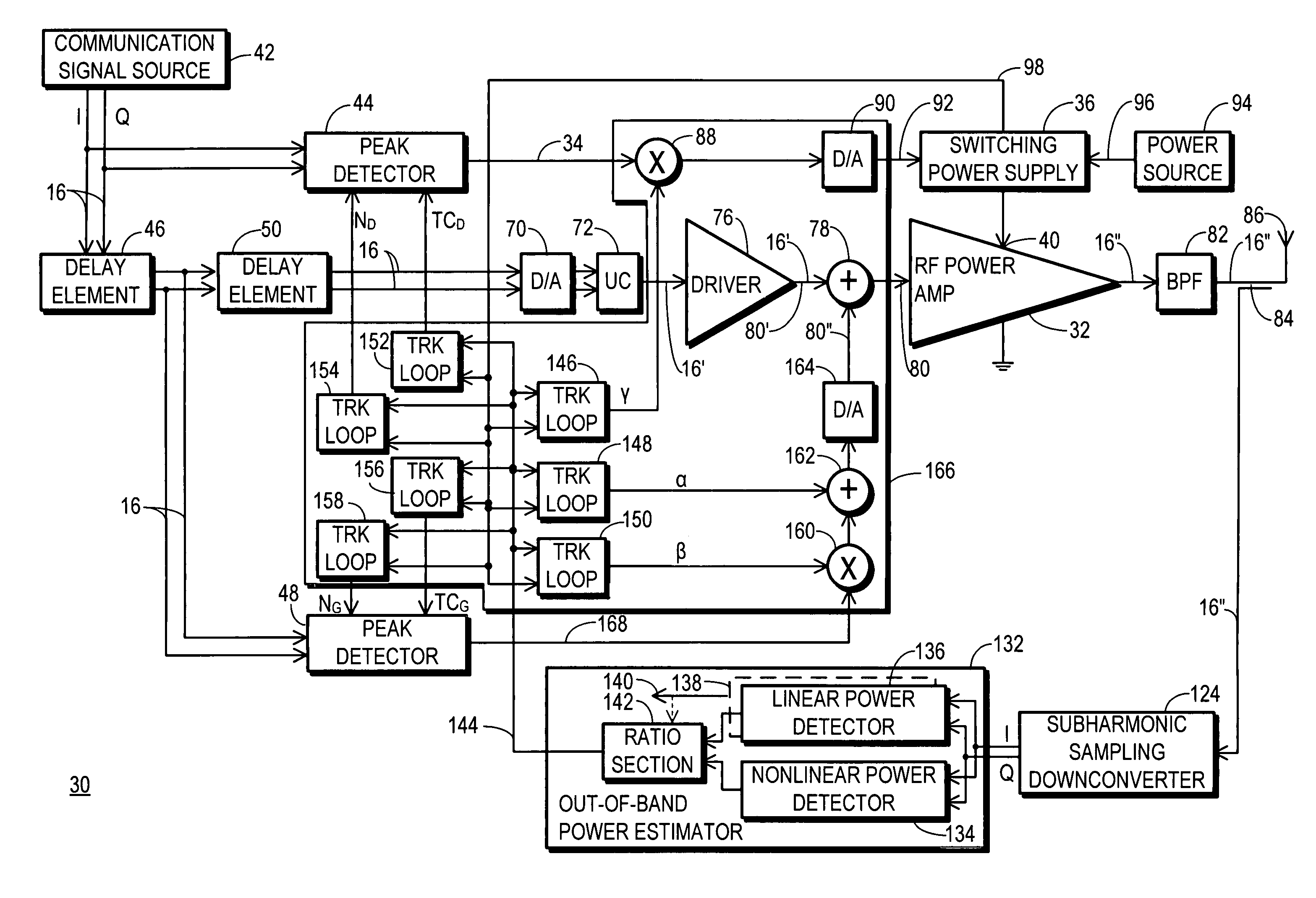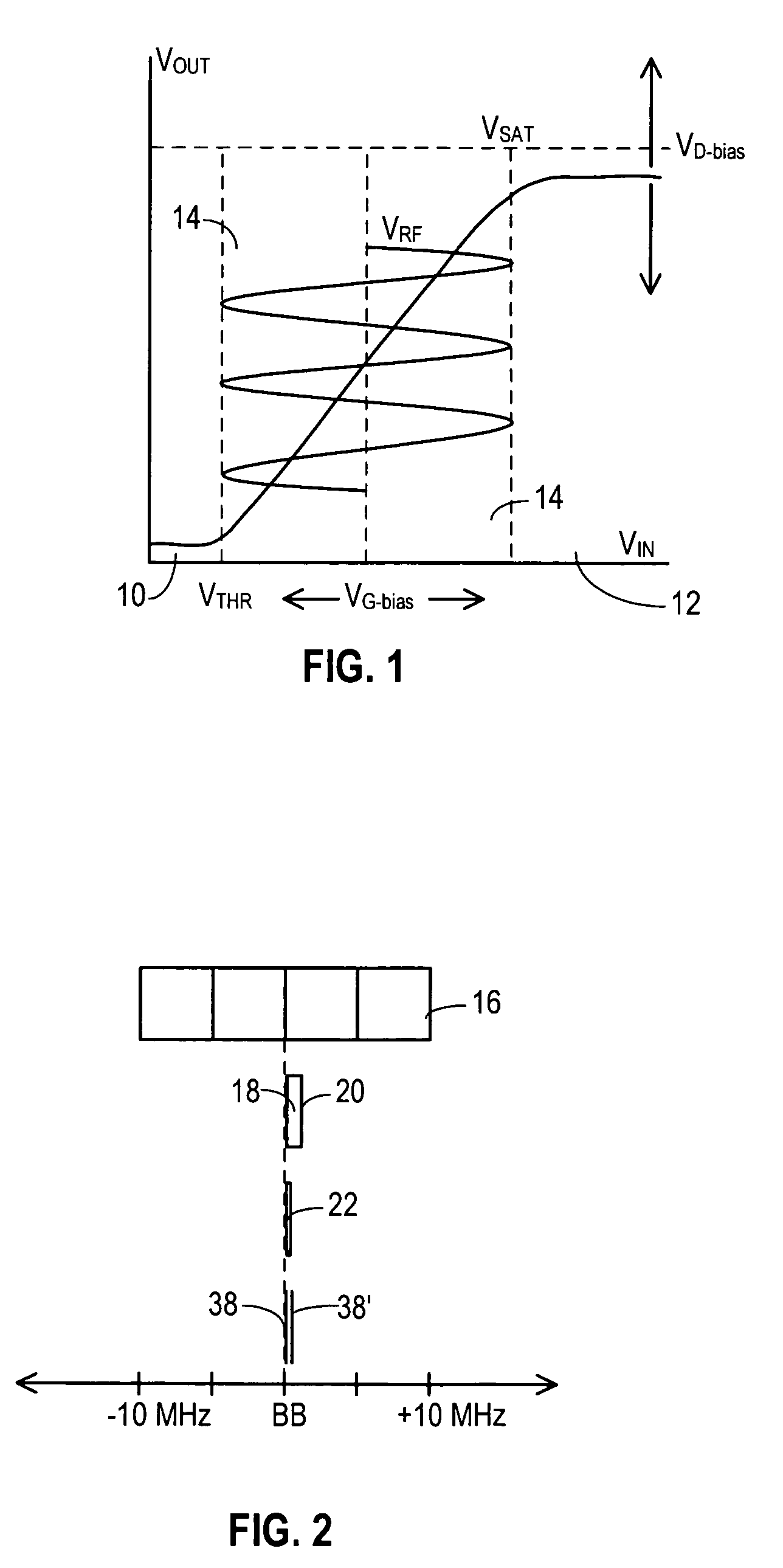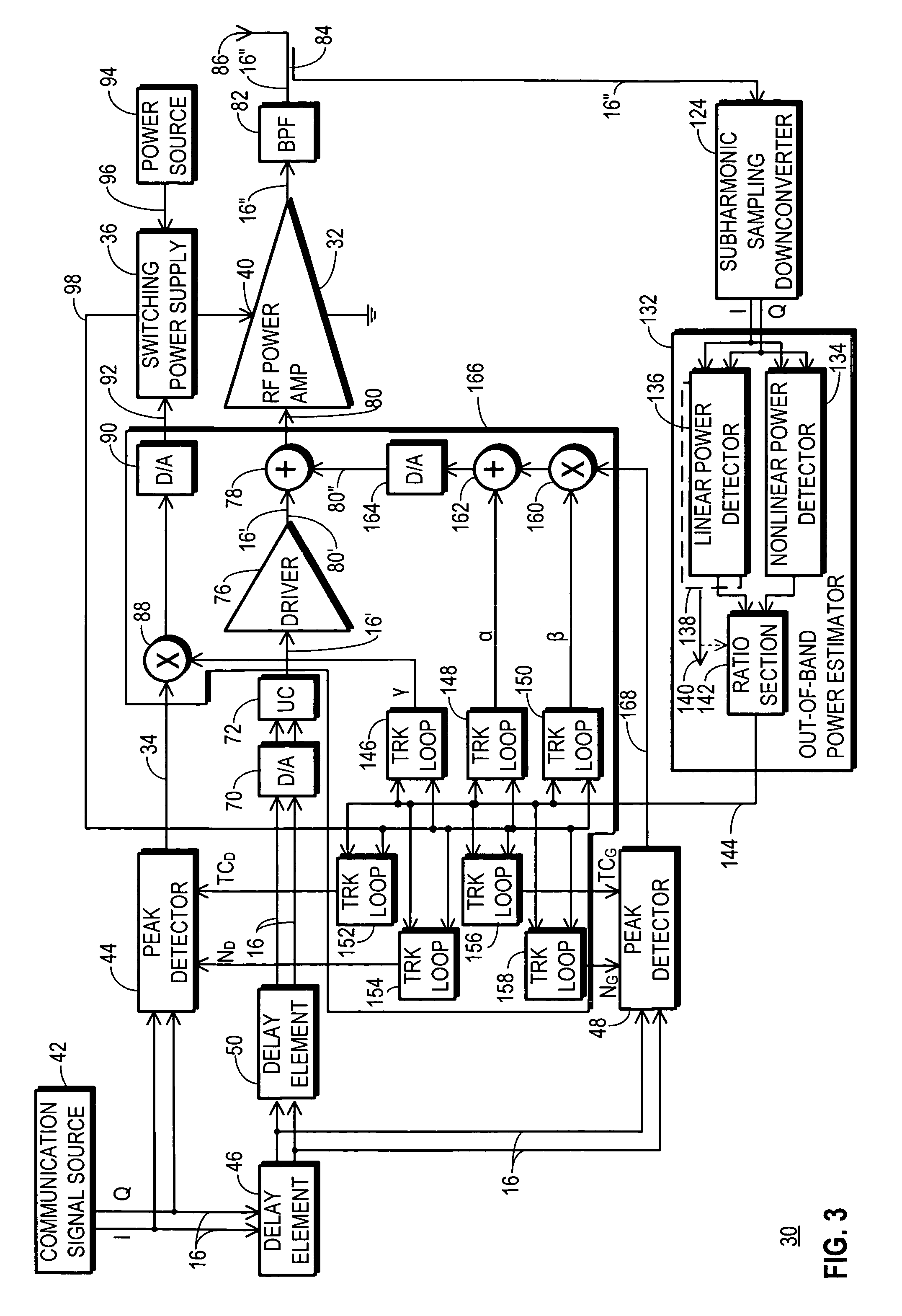RF transmitter with variably biased RF power amplifier and method therefor
a power amplifier and rf transmitter technology, applied in the field of rf transmitters, can solve the problems of nonlinearity, nonlinearity, nonlinearity, nonlinearity, etc., and achieve the effect of increasing the strictness of the spectral mask, avoiding interference, and avoiding interferen
- Summary
- Abstract
- Description
- Claims
- Application Information
AI Technical Summary
Benefits of technology
Problems solved by technology
Method used
Image
Examples
Embodiment Construction
[0038]FIG. 1 shows a chart that graphically depicts transfer characteristics of a typical RF power amplifier. In the preferred embodiment of the present invention, an RF power amplifier, discussed in more detail below, is biased for substantially class A operation, and the chart of FIG. 1 depicts this class A operation. Three potential regions of operation are depicted. In a cutoff region 10, the input voltage is beneath a threshold (VTHR), and regardless of the precise input voltage, the output voltage exhibits the same low level. In a saturation region 12, the input voltage is greater than a predetermined level, but regardless of the precise input voltage, the output exhibits substantially the same high level. The size of cutoff region 10 is primarily determined by the semiconductor and other architectural characteristics of the RF power amplifier.
[0039]But the point at which the RF power amplifier transitions into saturation region 12 is determined in part by a bias voltage (VD-b...
PUM
 Login to View More
Login to View More Abstract
Description
Claims
Application Information
 Login to View More
Login to View More - R&D
- Intellectual Property
- Life Sciences
- Materials
- Tech Scout
- Unparalleled Data Quality
- Higher Quality Content
- 60% Fewer Hallucinations
Browse by: Latest US Patents, China's latest patents, Technical Efficacy Thesaurus, Application Domain, Technology Topic, Popular Technical Reports.
© 2025 PatSnap. All rights reserved.Legal|Privacy policy|Modern Slavery Act Transparency Statement|Sitemap|About US| Contact US: help@patsnap.com



